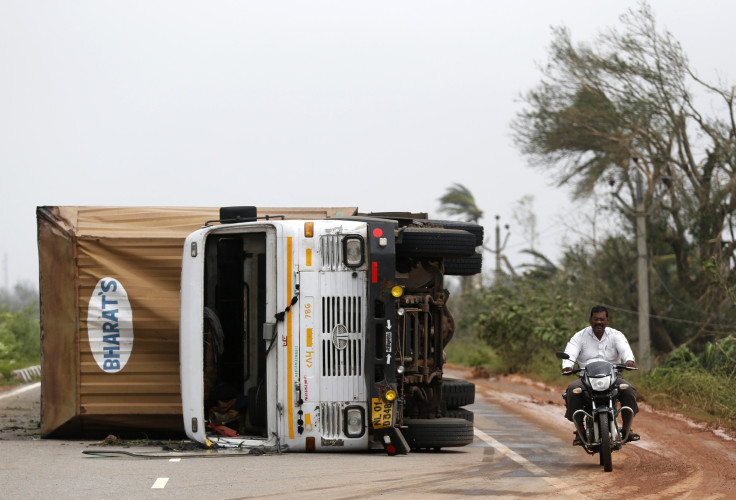Cyclone Phailin Death Toll Limited To 15 Thanks To Timely Mass Evacuation; Rehabilitation Is Next Challenge

The mass evacuation of about half a million people from the eastern Indian states of Odisha and Andhra Pradesh ahead of Cyclone Phailin has been credited with the relatively low death toll from one of the worst storms to hit the country in more than a dozen years.
Phailin, which made landfall on Saturday, packed winds of up to 135 miles per hour, and of the 15 casualties reported by Reuters, most died from falling trees while one was buried after a mud hut collapsed on her. In contrast, about 10,000 people were killed in the last cyclone of this size to hit Odisha, in 1999, Reuters reported.
This time, however, authorities were prepared and managed to evacuate about 500,000 people from the two coastal states, news reports said, adding that the displaced evacuees took refuge in shelters, schools and temples on higher ground.
"This is one of the largest evacuations undertaken in India," said Shashidhar Reddy, vice-chairman of the National Disaster Management Authority, the Guardian reported.
Local media praised the meteorological department and government authorities, who, Reuters reported, canceled the vacations of bureaucrats during a major religious holiday, and promptly deployed rescue and relief operations with the use of heavy equipment including helicopters and boats.
"The loss of life has been contained this time with early information and speedy action of government," Sandeep Chachra, executive director of ActionAid India, told Reuters.
However, according to aid workers, a bigger task lies ahead as thousands of displaced people, whose homes and businesses were destroyed by the monster storm, will need help with rehabilitation.
"They cannot stay in the shelters for long as they are overcrowded and sanitation issues will crop up with the spread of diseases such as diarrhoea and dysentery, especially amongst young children," Mangla Mohanty, head of the Indian Red Cross in Odisha, told Reuters.
A column in Mint, a daily business newspaper, quotes preliminary estimates to note that more than 234,000 homes have been destroyed in Odisha's Ganjam district, which was the worst hit by the storm, and a massive rebuilding effort will be required to restore the region's electricity infrastructure.
"The damage in terms of lost livelihoods -- due to crop destruction, work loss and other economic effects -- will be fully known only in the weeks and months ahead. Phailin's final bill may end up biting Odisha quite a bit," the column states.
The storm, which is expected to make its way across the northern half of the country should lose strength over the central highlands by the middle of next week, the Guardian reported.
"Its intensity is still strong, but after crossing the coast it has weakened considerably," Sharat Sahu, an official with the Indian Meteorological Department in Odisha, told reporters, according to the Guardian.
© Copyright IBTimes 2024. All rights reserved.






















